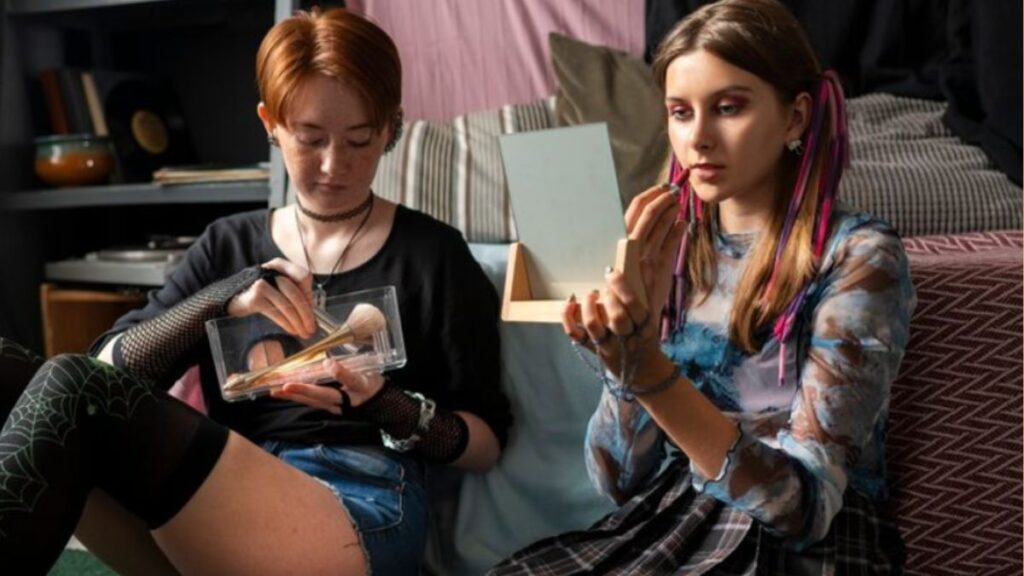Introduction to the femboyish aesthetic
The femboyish aesthetic is making waves in the fashion and beauty world, turning heads and challenging traditional norms. A fusion of masculinity and femininity, this style embraces a playful approach to gender expression that’s fresh, vibrant, and unapologetically unique. With roots tracing back through various cultural movements, it’s more than just clothing; it’s a statement about identity and self-acceptance. As we dive deeper into what defines the femboyish aesthetic, we’ll unpack its rich history while breaking down common stereotypes associated with it. Join us on this journey as we explore how fashion plays a pivotal role in celebrating gender fluidity and how social media has propelled this movement into the mainstream spotlight.
The history and origins of the term
The term “femboy” has roots in the blending of femininity and masculinity. It surfaced prominently in online communities during the early 2000s, emerging as a playful descriptor for individuals who embraced traditionally feminine traits while still identifying with male gender norms.
Originally used within anime and gaming cultures, femboys often portrayed characters that challenged conventional gender roles. This representation sparked interest in real-life expressions of similar aesthetics.
As social media gained traction, so did the visibility of this identity. Platforms like Tumblr and TikTok became fertile ground for sharing images and ideas related to femboy culture.
In recent years, discussions surrounding gender fluidity have further popularized the term. The concept now transcends its initial boundaries, evolving into a broader celebration of self-expression without fear of judgment or stigma.
What defines the femboyish aesthetic?
The femboyish aesthetic is a vibrant tapestry woven from diverse influences. It blends elements of femininity with traditionally masculine traits, creating a unique identity that defies conventional gender norms.
Clothing plays a vital role in this aesthetic. Think oversized sweaters paired with fitted jeans or pastel colors contrasting against darker hues. Accessories like chokers and earrings add flair without adhering to strict gender lines.
Makeup also features prominently. Many femboys embrace cosmetics, using them as tools for self-expression rather than conformity. Soft eyeliner and shimmering highlighters enhance natural beauty while challenging societal expectations.
Hair styling varies widely; some opt for long flowing locks while others sport chic pixie cuts. The focus remains on individuality—each person curating their look based on personal preference rather than rigid standards.
The femboyish aesthetic thrives on fluidity, encouraging creativity and authenticity within fashion choices.
Breaking down stereotypes associated with femboys
Stereotypes often paint femboys as solely flamboyant or overly feminine. This narrow view overlooks the rich diversity within this aesthetic.
Femboys can embody various traits, from soft and gentle to edgy and bold. Their expression is not confined to a specific mold; it’s fluid and ever-evolving.
Moreover, many associate femboy culture with a lack of masculinity. In reality, embracing femininity does not diminish one’s identity as male or masculine. It simply allows for broader self-expression.
The concept challenges traditional gender norms that dictate how one should look or behave based on their assigned gender at birth. Femboys often blend styles that might be deemed “masculine” with elements traditionally labeled “feminine.”
By redefining these terms, they open up conversations about acceptance and understanding in society. It’s essential to recognize individuality rather than confine people into predefined roles based on appearance alone.
How fashion and beauty play a role in the femboyish aesthetic
Fashion and beauty are at the heart of the femboyish aesthetic. This style seamlessly blends elements traditionally associated with femininity and masculinity, creating a unique visual expression.
Bold colors, playful patterns, and fitted silhouettes often define this look. Accessories like chokers or delicate jewelry enhance individuality while challenging conventional norms.
Makeup also plays a significant role in defining this aesthetic. Many embrace cosmetics to highlight their features rather than conforming to gendered expectations. Soft pastels or striking eyeliner can transform an outfit into something extraordinary.
Footwear choices vary from chunky sneakers to elegant heels, offering versatility that speaks volumes about personal taste.
Fashion becomes a canvas for self-expression within the femboyish community. Each choice reflects not just style but also identity—a celebration of fluidity that encourages everyone to break free from restrictive labels.
The influence of social media on the rise of this aesthetic
Social media has played a crucial role in popularizing the femboyish aesthetic. Platforms like Instagram, TikTok, and Twitter have become vibrant spaces where gender expression flourishes.
Users share their unique styles through photos and videos, showcasing bold outfits that blend masculinity with feminine touches. This visibility encourages others to explore their identities without fear of judgment.
Hashtags such as #femboy and #genderfluid create communities where individuals find support. They connect over shared experiences and aesthetics, fostering acceptance.
The rise of influencers embracing this style amplifies its reach. Their followers gain inspiration to challenge traditional norms while experimenting with fashion choices that reflect their personalities.
This cultural shift is evident; what was once niche now occupies a more significant space in mainstream conversations about gender identity and self-expression. Social media continues to break barriers, making the femboyish aesthetic part of an evolving dialogue on individuality.
Embracing and celebrating gender fluidity through fashion
The femboyish aesthetic acts as a vibrant canvas for gender fluidity. It challenges rigid norms and invites self-expression through clothing choices. Here, fashion becomes a tool for liberation.
Mixing traditionally masculine pieces with feminine touches creates unique styles that defy categorization. Loose-fitting tops paired with tailored pants or skirts can create an intriguing blend that showcases personal identity.
Accessories play their part too—bold jewelry or makeup enhances the look while celebrating individuality. This fusion encourages people to explore what makes them feel authentic.
Social media amplifies this movement, providing platforms where diverse expressions thrive and connect communities worldwide. Participants find inspiration in one another’s journeys, fostering acceptance and understanding.
Through these creative outlets, society is slowly learning to embrace fluidity over binaries—encouraging everyone to redefine beauty standards on their own terms while encouraging others to do the same.
Impact on mainstream fashion and society’s acceptance of gender non-conform
The femboyish aesthetic has made waves in mainstream fashion, challenging traditional gender norms. Designers are increasingly blurring the lines between masculinity and femininity. This shift invites a broader spectrum of self-expression.
Runways now showcase collections that embrace soft fabrics, playful colors, and unconventional silhouettes. High-fashion brands are taking cues from the vibrant world of street style. Femboys have become trendsetters, inspiring a new generation to experiment with their looks.
Society is responding positively as well. Acceptance of gender non-conformity is growing more widespread. Conversations around identity are becoming less stigmatized.
This cultural evolution allows individuals to feel empowered in their choices. The boundaries of what is considered acceptable attire continue to expand seamlessly, creating dynamic spaces for everyone to express themselves freely without judgment or fear.
Conclusion
The emergence of the femboyish aesthetic has sparked important conversations about gender expression and identity. As more individuals embrace this style, it challenges traditional norms surrounding masculinity and femininity. The blending of fashion and beauty creates a platform for self-expression that resonates with many.
Social media plays a crucial role in amplifying these voices, allowing communities to flourish online. This visibility encourages others to explore their identities without fear or stigma.
As society becomes increasingly open-minded, the impact of femboy culture on mainstream fashion continues to grow. Designers are beginning to incorporate elements that celebrate fluidity, paving the way for future generations.
With each passing day, our understanding of gender expands beyond rigid definitions. Embracing diversity in all its forms is essential for fostering acceptance and love among individuals from all walks of life.






